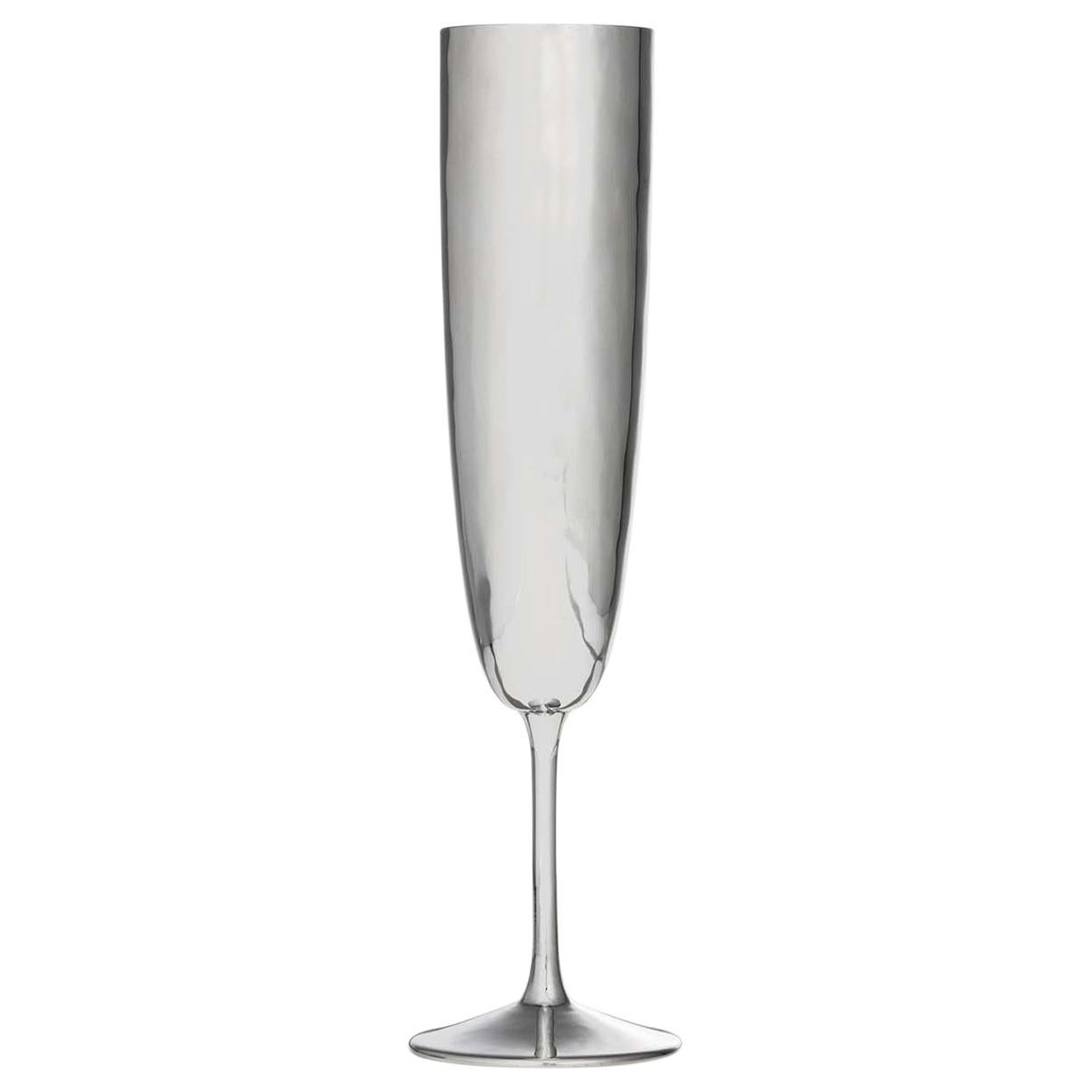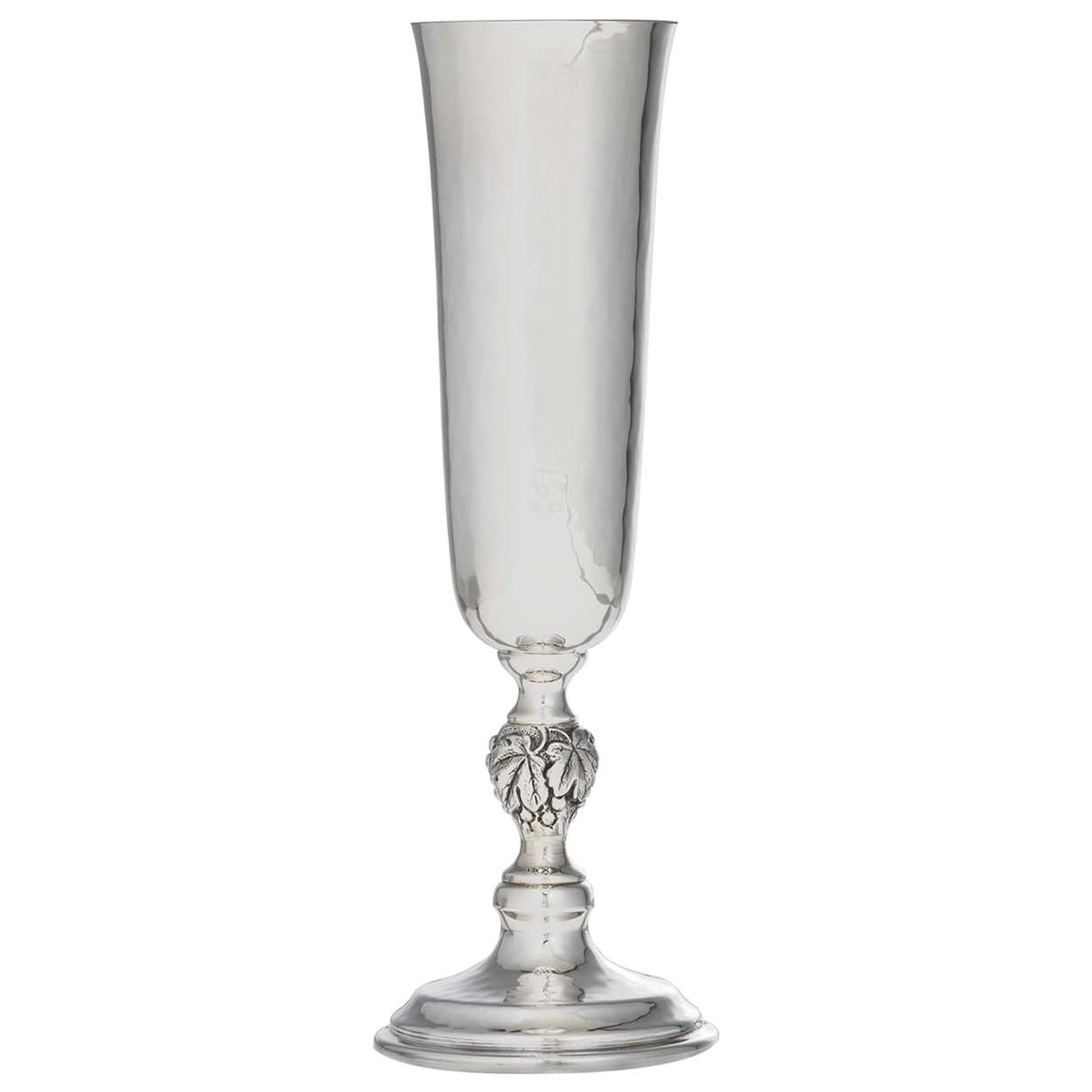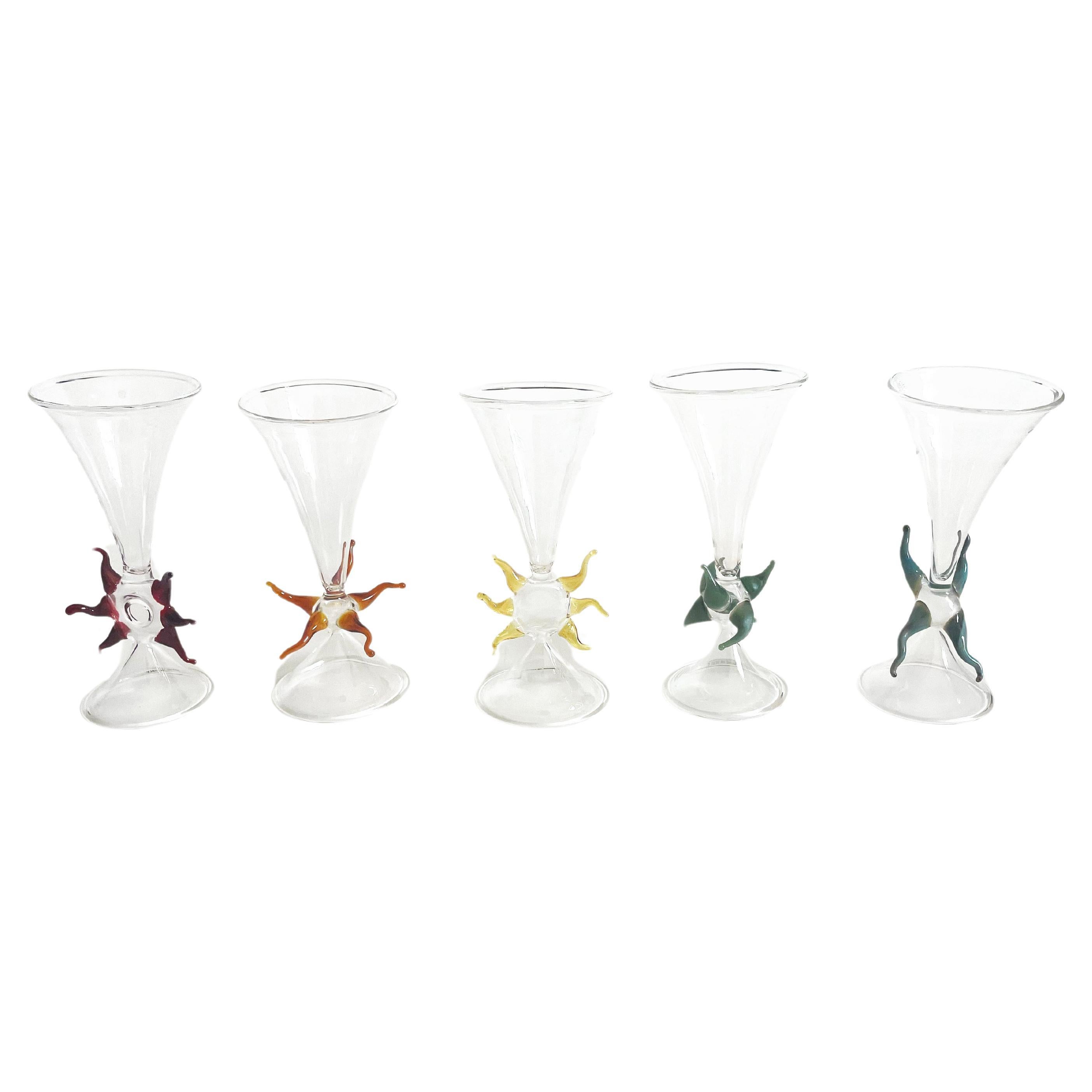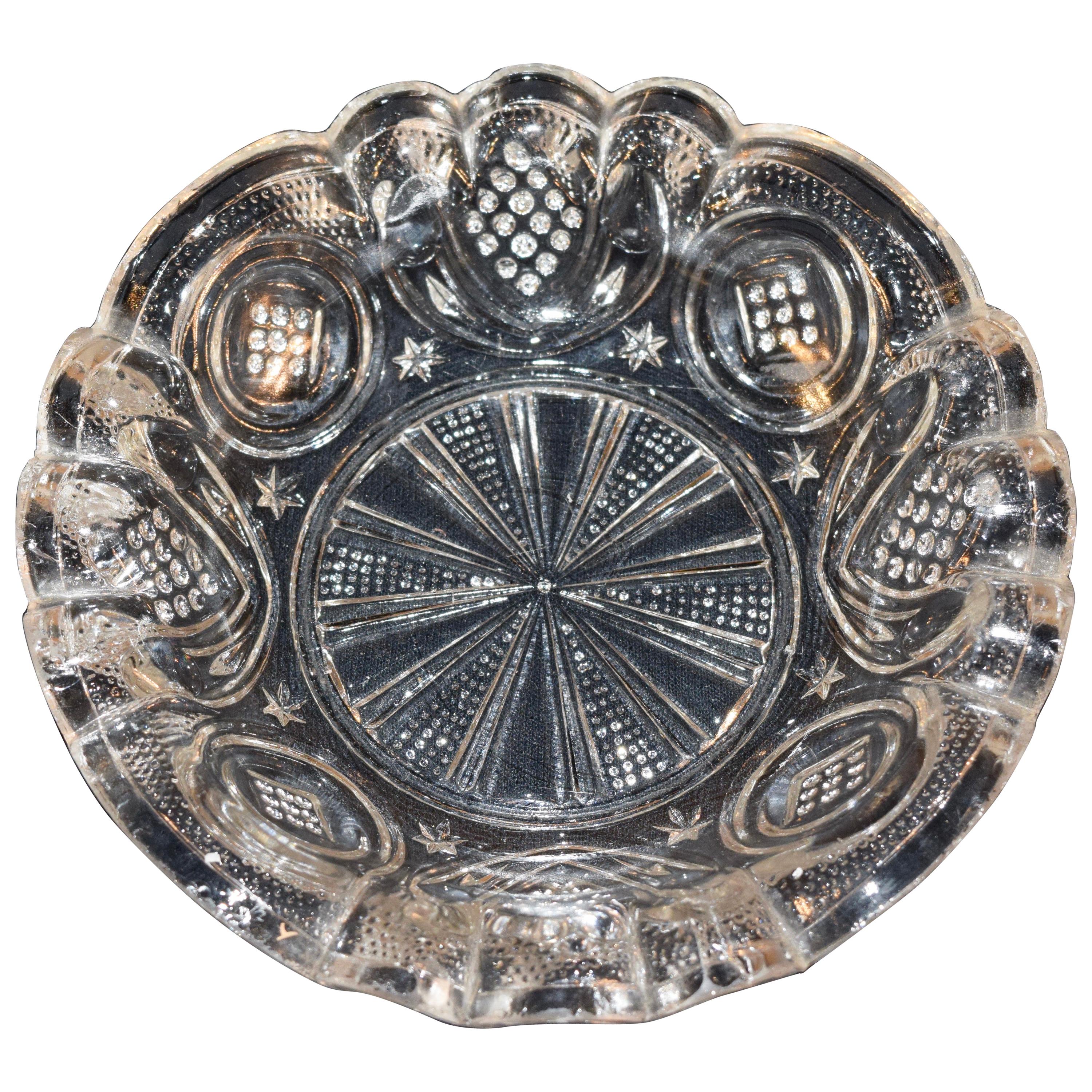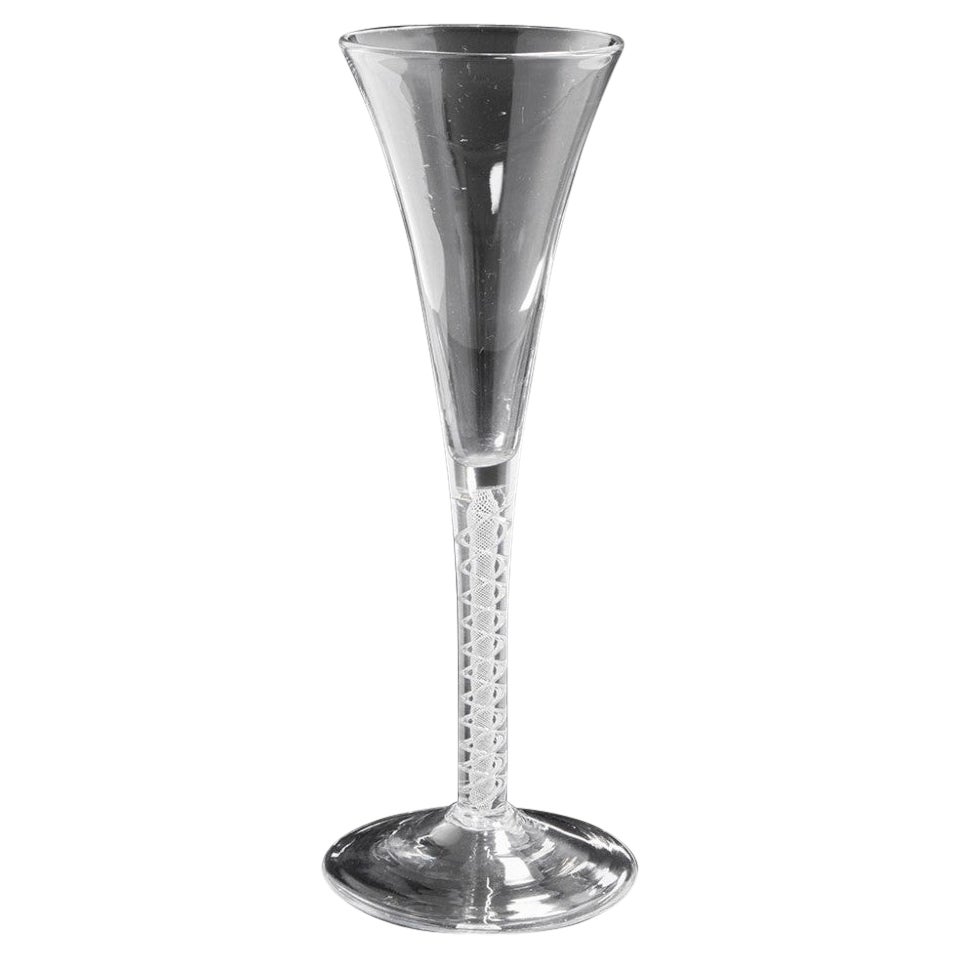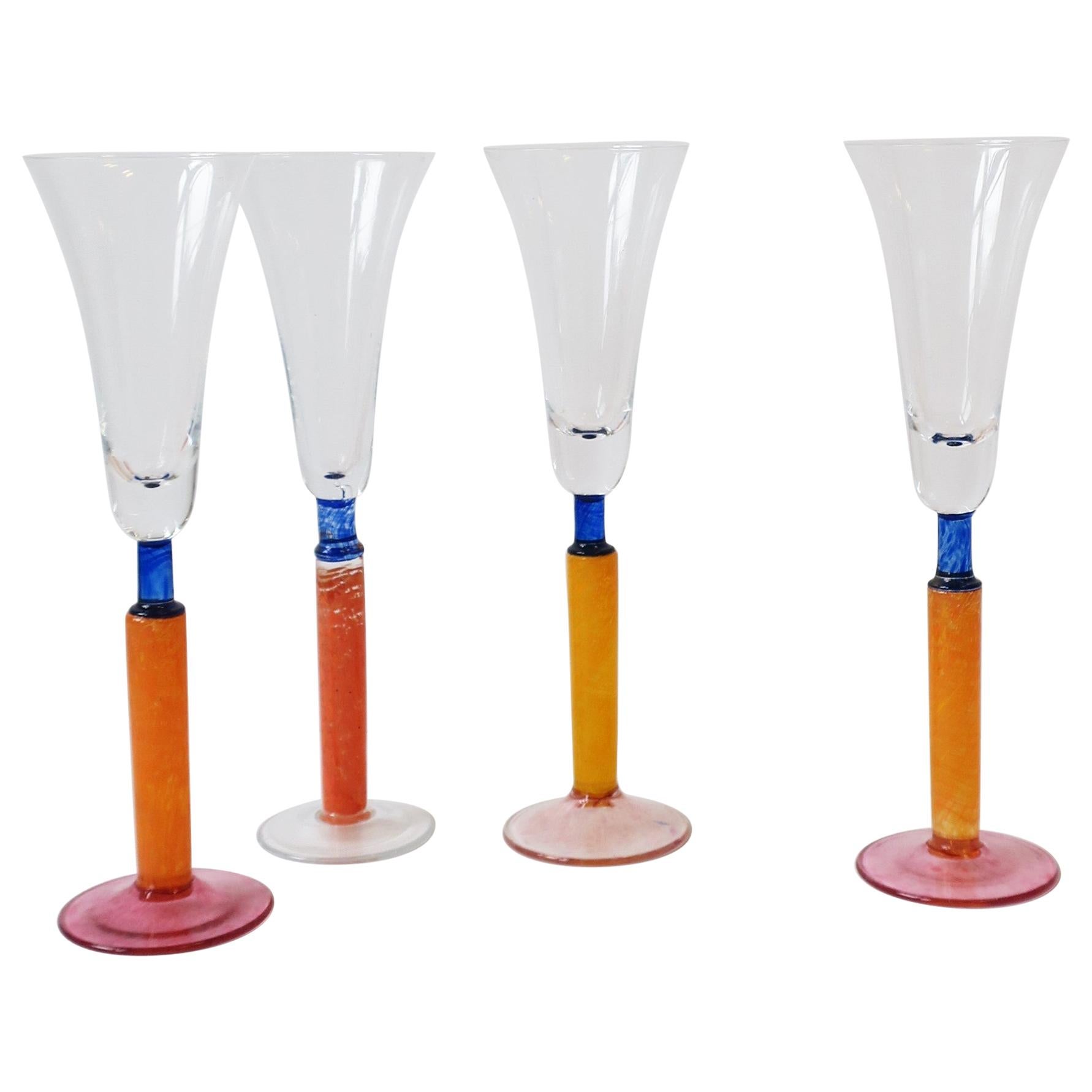Items Similar to German Oversized Memento Mori Glass Flute
Want more images or videos?
Request additional images or videos from the seller
1 of 14
German Oversized Memento Mori Glass Flute
About the Item
Unusual 1920's German oversized glass flute. The flute with circular base and tapered body with gilt rim opening and stylised bubble decoration within the stem. To each side etched decoration with a Memento mori to one side and an insignia reading SUUM CUIQUE to the other representing the Order of the Black Eagle.
Notes suum cuique, Latin translated as "to each his own" or "may all get their due". It has been significant in the history of philosophy and as a motto. The Order of the Black Eagle as seen on the glass is the current emblem for the German Military Police. Originally the Order of the Black Eagle was the highest order of chivalry in the Kingdom of Prussia. The order was founded on 17 January 1701 by Elector Friedrich III of Brandenburg (Friedrich I King of Prussia). In his Dutch exile after World War I, deposed Emperor Wilhelm II continued to award the order to his family. He made his second wife, Princess Hermine Reuss of Greiz, a Lady in the Order of the Black Eagle. The emblem upon this glass is a could represent a possible gift in honour of the accolade.
Measurements 28cm high x 10.7cm wide.
Condition very good, one small scratch to the inside (as photographed)
- Dimensions:Height: 11.024 in (28.01 cm)Width: 4.21 in (10.7 cm)Depth: 4.21 in (10.7 cm)
- Materials and Techniques:
- Place of Origin:
- Period:
- Date of Manufacture:circa 1925
- Condition:Wear consistent with age and use. One small 1cm scratch to the inside of the vase next to the insignia.
- Seller Location:Newark, GB
- Reference Number:
About the Seller
5.0
Vetted Seller
These experienced sellers undergo a comprehensive evaluation by our team of in-house experts.
Established in 2019
1stDibs seller since 2022
18 sales on 1stDibs
Typical response time: 2 hours
- ShippingRetrieving quote...Ships From: Newark, United Kingdom
- Return PolicyA return for this item may be initiated within 14 days of delivery.
More From This SellerView All
- German Memento Mori Carved SkullLocated in Newark, EnglandAntique 18th century fruitwood carved Memento Mori Skull. The skull of petrified display powerfully carved in the form of a human skull consisting of the cranium, upper and lower jaws, the cadaverous face with deliberate missing tooth in brown wash patination throughout. Stood upon a small marble base with the skull attaching via a dowel fitting. The Skull probably from German origin. Notes From approximately the sixteenth century, skulls were commonly used to remember death as they symbolise the transience of human life. Memento Mori literal Latin translation means remember that you [have to] die. The concept has its roots in the philosophers of classical antiquity, and appeared in funeral art and architecture of the medieval period. Memento Mori jewellery...Category
Antique 18th Century German Gothic Mounted Objects
MaterialsMarble
- French Opaline & Ormolu Vase PairLocated in Newark, EnglandA beautiful pair of French ormolu mounted opaline vases. The vases with splayed feet upon pinched bases with globular bodies and tapered necks decorated with a light violet hue. The ...Category
Antique Late 19th Century French Art Nouveau Glass
MaterialsOrmolu
- Art Nouveau Gradient Perfume BottleLocated in Newark, EnglandFitted with the original Glass Stopper The bottle of large sized with tapered base and top with a gradient Green hand cut glass body, silver hinged lid and original glass stopper. T...Category
Early 20th Century Central American Art Nouveau Glass
MaterialsSilver, Sterling Silver
- Oversized Georgian Barley Twist Candle SticksLocated in Newark, Englandfine and very unusual large pair of English open barley twist candle sticks. The candle sticks of extraordinary Size with a beautiful dark b...Category
Antique Early 19th Century English Georgian Candlesticks
MaterialsWood
- Oversized Swiss Black Forest Dog Tobacco JarBy Black ForestLocated in Newark, EnglandThe tobacco jar of unusually large size modelled as a humorous dog with its mouth open and tongue sticking out. The dog is highly detailed with individual carving lines for its hair, nose and paws finished with orange glass eyes. The tobacco jar hinges around the neckline of the dog to reveal the hollowed out centre for storing tobacco. The tobacco jar dates to the late 19th century circa 1890. Black Forest is a term used to describe the elaborate, realistic carvings of a vast array of wooden pieces such as clocks and animals. Our Black Forest collection at Jacksons Antique features varying objects of highly desirable carvings such as woodland animal Tobacco Jars. Our aim is to supply that breathtaking piece of Black Forest to add that special edge to any collection or home. Commonly thought to originate from the Black Forest in Bavaria Germany, Black Forest carvings actually originate from Switzerland. The most recogniseable Black Forest carvings are usually bears carved amongst different pieces such as hat stands, tables and whimsical figures. Black Forest products can also be seen carved into other forest wildlife as well as clocks, music boxes and furniture although these are more uncommon making them highly desirable. Black Forest items...Category
Antique Late 19th Century Black Forest Snuff Boxes and Tobacco Boxes
MaterialsWood
- German Silver Gilt Minaudière Louis KuppenheimBy Louis KuppenheimLocated in Newark, EnglandThe minaudière of rectangular form with curved corners features a repousse monkey which humorously goes through the case with the front side of the monkey on the cover and the rear side of the monkey on the back. The exterior of the case is gilded Silver with cabochon Sapphires and a top carry loop. To the left of the top a second loop contains the original pencil which pulls out for taking notes upon the ivorine notepad within. The interior of the case features several compartments which open via the Sapphire tabs, the left side contains two smaller compartments while the right side features a bevel edged mirror with an ivorine notepad to the reverse and a spring loaded tab to the compartment. The case is hallmarked in several locations with the London ‘omega’ import mark (1906-1998), the import Silversmiths mark Gresham Barber & Co and is dated 1907. Although the minaudière does not bear the original makers hallmark we firmly attribute the case to Louis Kuppenheim a renowned German Silversmith who made designs matching this minaudière. Louis Kuppenheim (1824-1889)was founded in 1854 together with Heinrich Witzemann they were located in Pforzheim, southwestern Germany and is known as the gateway to the Black Forest. In 1857 Kuppenheim moved forward as a solo business without his partner and moved to Durlacher Straße 1, Old Town street in Pforzheim. Upon the death of Louis Kuppenheim in 1889 3 of his 6 children (Albert, Hugo and Moritz) took over running the company and in 1900 at the Universal Exhibition in Paris the firm won a gold medal for a paper knife. In the same year the company opened the first store in the Rue de Richelieu 67 in Paris. In the 1900s Hans Christiansen designed some silver parts and pieces of jewellery, which were made by the Manufacture Kuppenheim. Christiansen was an important Art Nouveau painter and a member of the Darmstadt artists’ colony. In 1906 Albert, Hugo and Moritz convert the inherited jewellery factory into a modern gold and silverware fabrication and one year later relocated to 69 Durocher Street. Over the next 30 years the company expanded their business with mechanical workshops for gold and silver along with more machinery along with the death of Albert Kuppenheim and Ludwig (another son of Louis) taking over the company. After the war broke out in 1939 the company went into liquidation ending its 82 year history. During the heyday of the company over 200 people were employed by Louis Kuppenheim making it one of the most important employers in the jewellery city of Pforzheim. In the more than eighty years of production some 100,000 pieces left the company. Kuppenheim made many items in small series, for example boxes and minaudières (women’s fashion accessory, generally considered a jewellery piece, intended to substitute for an evening bag. A case with compartments, it allows storage for several items in a small space, such as a makeup compact, lipstick, watch, reading glasses, or keys) and compacts and cigarette cases...Category
Antique Early 1900s German Art Nouveau Sterling Silver
MaterialsGold Plate, Silver
You May Also Like
- Flute GlassLocated in Milan, ITThe Flute Glass is crafted in silver, an extraordinary material that offers antibacterial and antibiotic properties, while maintaining the fine quality a...Category
2010s Italian Modern Glass
MaterialsSilver
- Renaissance Flute GlassLocated in Milan, ITExtraordinarily beautiful, this Renaissance Flute Glass is crafted in silver, a material offering the phenomenal properties of enhancing the scent and fl...Category
2010s Italian Modern Glass
MaterialsSilver
- Signed Italian Art Glass Champagne FlutesLocated in Fall River, MASet of five stunning handblown glass champagne flutes by Massimo Lunardon. Each measures approx. 5.5" tall. Artist signed and made in Italy.Category
21st Century and Contemporary Italian Glass
MaterialsArt Glass
- EAPG Fluted Rim Pressed Glass BowlLocated in High Point, NCEAPG pressed glass bowl with lovely pattern and a gracefully fluted rim.Category
Antique Late 19th Century American Glass
MaterialsGlass
- Mixed Twist Georgian Glass Flute c1760Located in Tunbridge Wells, GBHeading : Mixed twist Georgian ale of champagne glass Period : George II / George III - c1760 Origin : England Colour : Clear Bowl : Conical Stem :A pair of air twist tapes outwith a...Category
Antique 1760s British George III Glass
MaterialsBlown Glass
- Orange Art Glass Champagne Flutes Glasses Postmodern 1990sBy Kosta BodaLocated in New York, NYA beautiful set of four (4) Postmodern orange art glass Champagne flute glasses, circa 1990s, Europe. In the style of Kosta Boda, Sweden. Co...Category
Late 20th Century European Post-Modern Barware
MaterialsArt Glass, Blown Glass
